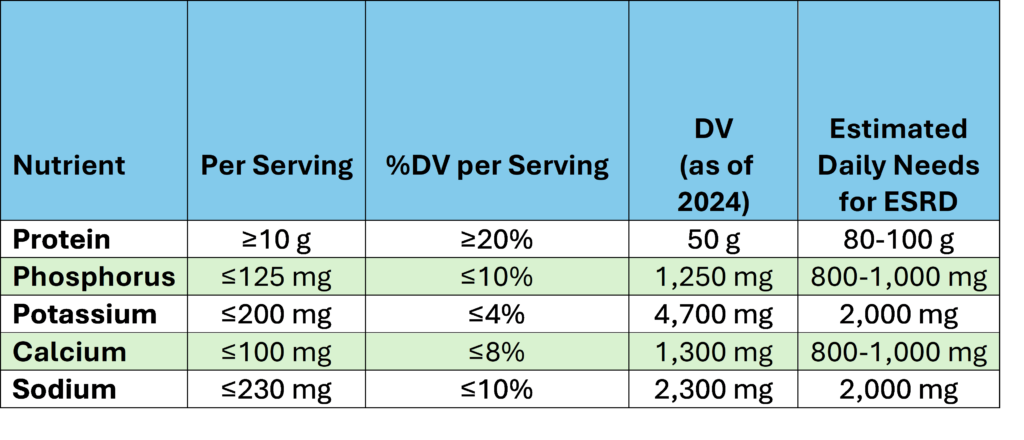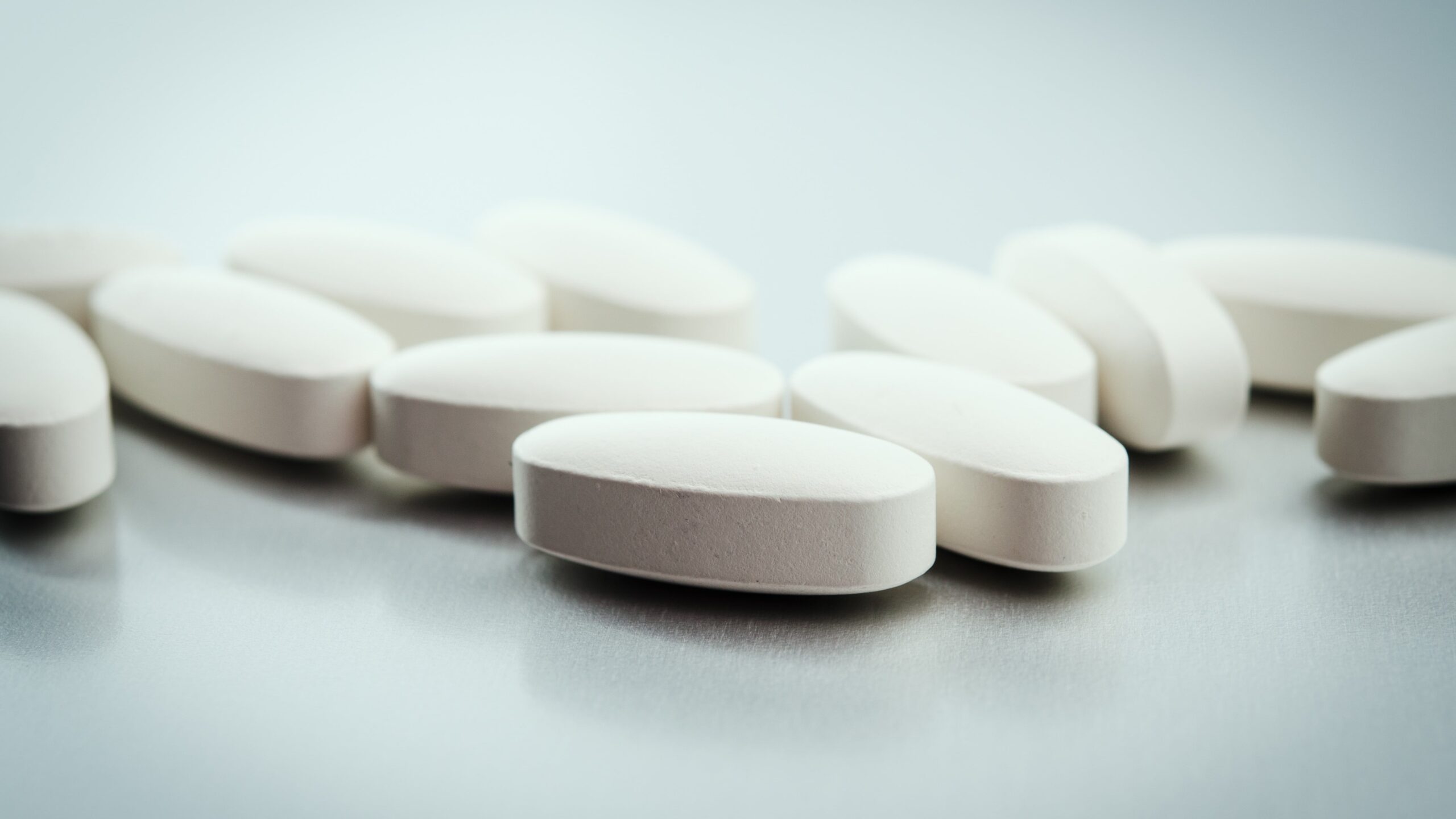
A small study conducted at two clinics showed that an educational handout about supplementation with protein bars could boost dialysis patients’ protein stores, as evidenced by improvements in their albumin outcomes and overall cumulative metrics. However, the type of bars purchased and consumed are essential. Patients who select protein bars without proper guidance may end up with abnormal or even critical lab values.
As clinicians, we can help educate patients to find renal-friendly, high-protein supplement sources.
Reading Nutrition Labels
Patients must understand how to read a Nutrition Facts label. You may want to share a broad overview of the purpose of these labels and how to read them, but the chart below provides a helpful shortcut for patients on dialysis seeking appropriate protein bars.
The chart is based on recommended renal dietary needs and percent daily values (%DV, based on a Recommended Dietary Allowance of 2,000 calories). Note that the daily value for potassium was lowered to 4,700 mg for the healthy population in March 2024. This change is especially important for dialysis patients because they will need to seek foods with much lower levels of potassium than they have been taught historically.
Figure: Reading Protein Bar Labels

Not only should dialysis patients seek bars high in protein, but they should look at the values for other nutrients. Some foods and supplements are high in phosphorus and potassium, nutrients that patients with end-stage renal disease should limit. Patients with kidney disease may also need to limit their calcium intake. Of course, everyone should limit sodium consumption.
Protein Bar Suggestions
In addition to providing the above chart for guidance, you may want to suggest a particular product based on a patient’s needs and preferences. Below are a few ideas.
Cookie Crisp Bars
- Wafer with creme inside
- Easy to chew, melts in your mouth
- Good for patients who lack appetite, are too tired to eat after dialysis, or have constipation or stomach problems
- Example: PowerCrunch High Protein Bar (11-20 g protein, 180-330 calories per serving)
Breakfast Bars
- Vanilla yogurt coating with chewy fruit flavor inside
- Good for patients who skip breakfast or as a snack on days of dialysis when going 4-6 hours without eating
- Example: Kellogg’s Special K Protein Meal Bars (12 g protein, 180 calories per serving)
Chocolate-Coated Bars
- Dense, chocolate-coated bars similar to a candy bar
- May contain fruit, nuts, or peanut butter; the latter boosts the protein content
- Example: Pure Protein (20-21 g protein, 180-200 calories per serving)
High-Protein Bars
- Less expensive source of protein
- Good for patients with a hearty appetite those having difficulty meeting higher protein needs, or those who like to snack
- Example: Atkins Protein Meal Bar (13-17 g protein, 150-240 calories per serving)
Dairy-Free Bars
- Do not contain milk, whey, or other dairy-based proteins
- Good for patients with lactose and milk intolerance or allergies, or patients who avoid animal proteins for religious or other reasons
- Example: No Cow High Protein Bars (20-22 g protein, 180-200 calories per serving)
Bars With Limited Ingredients
- Bars containing five ingredients or less, with no added sweeteners, preservatives, or minerals
- The amount of protein in these bars may be limited
- Good for patients who dislike or cannot tolerate artificial sweeteners
- Example: RXBAR (12 g protein, 210 calories per serving)
Bars to Meet Special Dietary Needs
- Includes plant-based, vegan, and gluten-free bars
- Contains all-natural ingredients and no artificial sweeteners
- Good for patients with special diets, who cannot tolerate artificial sweeteners, or who prefer all-natural foods and avoid processed foods, preservatives, and additives
- Example: LÄRABAR (4-11 g protein, 100-230 calories per serving)
A Word of Caution
This is general nutrition advice only. It is important to read labels to check not only protein and calorie content, but also potassium and phosphorus, when considering needs for people on dialysis. Chocolate and nuts have added phosphorus, chocolate flavoring typically is higher in potassium, and soft bars are typically higher in phosphorus.
Daily recommended values are not patient-specific. These are general baselines that may be used to set and meet additional protein supplementation goals for individual patients.







 © 2025 Mashup Media, LLC, a Formedics Property. All Rights Reserved.
© 2025 Mashup Media, LLC, a Formedics Property. All Rights Reserved.